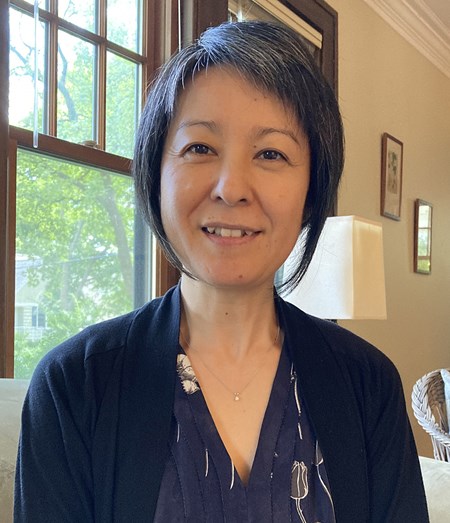
Naoko Wake is an associate professor of history in the College of Social Science and director of the Asian Pacific American Studies Program. The following faculty voice was also published in The Hill and on the APA Studies website.
Sometime in the early 1950s, a revelation struck Tadachi Kohara, a Japanese American survivor of the Hiroshima atomic bombing in 1945: “White people believed that we survivors had a bad disease.” Worse yet, the disease was deemed contagious, something that Kohara believed was evidenced by a peculiar way in which white people acted: “On a bus, they escaped from a seat next to a Japanese.” Born in San Fernando, California, in 1929, and returning to America from Japan (where he spent the war years) in 1950 as a young man, Kohara is one of many U.S. survivors of the Hiroshima and Nagasaki atomic bombings, a subject I explore in my book “American Survivors: Trans-Pacific Memories of Hiroshima and Nagasaki” (2021). As MSU’s Asian Pacific Islander Desi American — APIDA — community comes together during this year’s Asian American Heritage Month, my heart is laden with many stories of war, racism and hate that have long affected APIDAs in America.
The heritage month is normally a time for celebration. And yet, this year feels different as the longstanding exclusion of APIDAs from U.S. society has been shaping so much of APIDA Spartans’ experiences in the time of the coronavirus. The recent killing in Atlanta, Georgia, has only exacerbated the problem. To me, what has been particularly taxing is the persistent invisibility of APIDAs as one of America’s racialized minorities. Authorities say that the heinous crime was a result of sex addiction, not racism. The mass shooting in Boulder, Colorado, less than a week after the Georgia tragedy has quickly shifted the public discourse from hate crime to gun control.
APIDAs are so used to their imposed invisibility that they often excel at downplaying the pain that comes with it. Take, for example, Kohara’s story. Because these “white people” who avoided Kohara were likely unaware of Kohara’s survivorhood, it is striking that Kohara took their racially motivated actions as a sign of their fear of secondary irradiation. He could handle survivorhood; racism, in contrast, was difficult to acknowledge.
Indeed, this conflation of disease and race — APIDAs as a “diseased” racial group — that struck Kohara has long perpetuated the lack of recognition of racism against APIDAs. The conflation, for one, has made it easy for Americans to exclude APIDAs without sounding overtly hateful. Instead of professing hatred, they can say that they are simply avoiding persons infected with a contagious disease.
The coronavirus has certainly highlighted this pattern, though it has little that is historically new. When Severe Acute Respiratory Syndrome, or SARS, struck Asia in 2003, New York’s Chinatown became empty. Many New Yorkers believed, falsely, that the virus had spread to the Chinatown community. “Coughing while Asian” became emblematic of the disease. Turning our eyes further into the past, we find that the Black Death that struck San Francisco in 1900 led city authorities to affix the label of “Oriental Plague” on Chinese immigrants. The label gave others a pass to discriminate. In the era of the exclusionary immigration acts that posited Asians as “aliens ineligible for citizenship,” the justification was soundly underpinned by law.
Unfortunately, racism is breathtakingly creative. It takes a range of shapes and expressions. It is crucial — but not enough — to protest white-on-black violence and terror, inhumane treatment of refugees and undocumented immigrants, and high rates of poverty and suicide in Native American and Indigenous communities. Invisibility that hides racism, too, is an American racism’s product. Charles Yu, writer and 2020 National Book Award winner, made one of the Asian American characters in “Interior Chinatown: A Novel” say this: “‘After two centuries here, why are we still not American? Why do we keep falling out of the story?’” Yu will visit MSU’s Asian Pacific American Studies Program as part of our Heritage Month celebration. I encourage all Spartans to take advantage of this opportunity.
Banner image: Japanese American survivor George Kazuto Saiki (young child in muʻumuʻu with lei) and his family in Mo‘ili‘ili, Hawai‘i, circa 1935. A decade later, in 1945, he and his family suffered the US atomic bombing in Hiroshima.